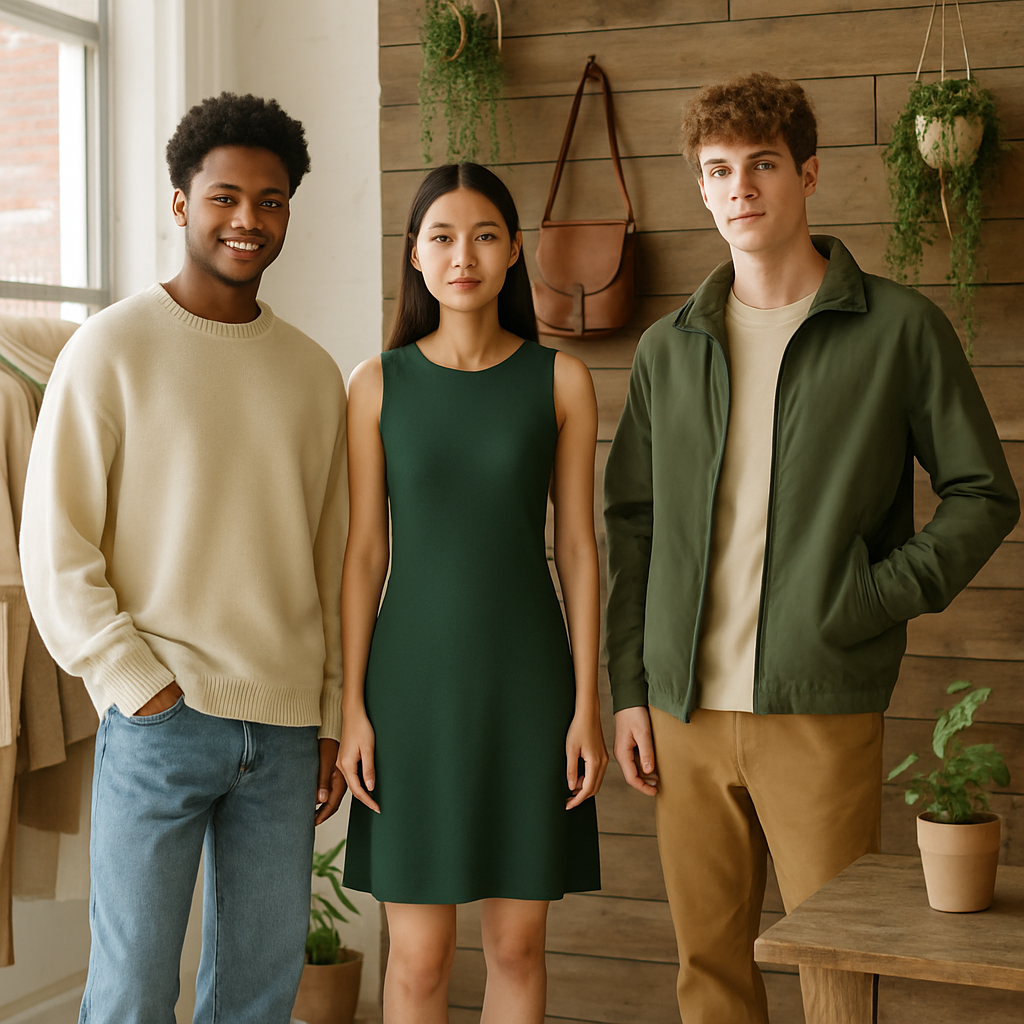Sustainable Fashion on a Budget Unpacking Affordable Eco-Friendly Style

Sustainable fashion has become more than just a buzzword; it’s an evolving practice that aligns with a growing awareness of environmental impact. But it often feels like embracing eco-friendly fashion means breaking the bank. That’s the age-old dilemma, isn’t it? Wanting to save the planet without emptying your piggy bank. The good news is, it’s entirely possible to dress sustainably without selling an arm and a leg. Let’s dig into how you can achieve a greener wardrobe without going green with financial envy.
The Myth of Costly Sustainability
Let’s address the elephant in the room: many believe that sustainable fashion is synonymous with expensive fashion. This perception isn’t entirely unfounded. Many brands market their eco-friendly lines at a higher price, presumably due to the costs of ethical labor and sustainable materials. Yet, here’s the kicker – sustainable fashion doesn’t have to mean purchasing from high-end labels. In fact, some of the most impactful steps toward sustainable fashion involve choices that cost next to nothing. Thrifting, swapping clothes with friends, and upcycling your existing wardrobe are just a few affordable ways to reduce fashion waste.
I remember a time when I was desperately trying to adhere to a sustainable lifestyle. I had just read an article by Stella McCartney, who is a big advocate of sustainable practices in fashion, and was convinced I needed to buy from her line to be truly eco-conscious. My wallet, however, was not impressed. So, I turned to local thrift shops. It was like a treasure hunt, finding unique pieces that had a story and didn’t contribute to new production cycles. Plus, the joy of finding a vintage 80s windbreaker in mint condition? Priceless.
Embracing Secondhand and Vintage
Thrift shopping is not just a fall-back option; it’s a rewarding choice that adds character and uniqueness to your clothing collection. Secondhand shopping is like a box of chocolates you never know what you’re going to get. Beyond the thrill of the hunt, buying secondhand reduces demand for new garments, which in turn minimizes environmental degradation caused by traditional fashion manufacturing.
Consider this: Fast fashion is notorious for its unsustainable practices, from excessive water usage to unfair labor conditions. By contrast, buying used clothes extends the life of each garment and reduces its overall environmental footprint. According to ThredUP’s 2023 Resale Report, buying and wearing secondhand clothing can reduce your carbon footprint by 82%. That’s a pretty compelling statistic, isn’t it?
The Art of Upcycling
Now, here’s where you can get creative. Upcycling transforms old garments into something new and exciting, and it’s a skill that anyone can learn. It’s like giving your clothes a facelift without the hefty price tag. Old jeans can be turned into a trendy denim skirt or patched up for a funkier look. A worn-out shirt might become a chic tote bag. The possibilities are endless and only limited by your imagination (and, well, maybe your sewing skills).
I once turned an old college t-shirt, which had seen better days, into a set of playful pillow covers. It did take a couple of YouTube tutorials to get it right, but the result was unique and infused with nostalgia. Plus, it was a conversation starter whenever I had guests over. Who knew a faded band shirt could be resurrected into home décor?
The Role of Conscious Consumerism
Sometimes, buying new is unavoidable. In such cases, it’s all about making conscious choices. Look for brands that are transparent about their supply chains. Fortunately, more companies are taking responsibility for their environmental impact. Patricia Espinosa, the Executive Secretary of the UN Framework Convention on Climate Change, has often emphasized the importance of transparency in sustainable practices. Companies like Everlane and Patagonia have set a standard by openly sharing details about their materials and labor conditions.
Choosing brands that prioritize eco-friendly practices means voting with your wallet for a better future. It’s like casting a ballot for the world you want to live in. While this might mean spending a bit more upfront, the longevity and ethical peace of mind these garments offer can outweigh the initial cost, not to mention that they often last longer than fast fashion alternatives.
Unexpected Benefits of a Sustainable Wardrobe
Let’s not overlook the less obvious perks of sustainable fashion. You know that feeling of walking into a room and knowing you’re wearing something that’s not only stylish but also ethically sourced? It’s a confidence boost, knowing your choices contribute positively to the world. Plus, sustainable materials like organic cotton or linen tend to be of higher quality, offering comfort that mass-produced fabrics can’t always match.
I used to think my wardrobe had to change with every fleeting trend to be relevant. But after embracing sustainable fashion, I realized that true style is timeless. And maybe it’s just me, but I find it quite empowering to consciously curate a wardrobe that reflects my values as much as my taste.
The Real Costs of Fast Fashion
It’s easy to overlook the hidden costs of fast fashion. Those $5 t-shirts might be tempting, but they often come with a hefty price tag for the environment and human welfare. The fast fashion industry is one of the biggest contributors to pollution, not to mention its notorious reputation for exploiting workers. A report by the Ellen MacArthur Foundation revealed that fashion production contributes to 10% of global carbon emissions and 20% of wastewater. These figures are as staggering as they are sobering.
If we pause to consider the lifecycle of a fast fashion garment, from the water-intensive cotton cultivation to the toxic dyes used in production, it becomes clear why paying a little more for a sustainably made item is an investment in a healthier planet.
Bringing Back the Swap Party
Remember those swap parties? A bunch of friends getting together and trading clothes over a bottle of wine and some snacks? They might sound old-fashioned, but they’re a fantastic way to refresh your wardrobe without spending a dime. Plus, you get the added bonus of socializing and possibly acquiring something that’s been tried and tested by someone whose style you admire.
I attended a swap party last summer, and it was a blast. Not only did I come home with a new sweater (new to me, at least), I also discovered that my friend Linda had a hidden knack for styling that I never knew about. It’s amazing what you can learn about people and their closets during these gatherings.
A Call to Personal Style
Ultimately, sustainable fashion is not about following a strict rulebook; it’s about expressing yourself while being mindful of the impact. Whether it’s through thrifting, upcycling, or choosing to purchase from conscious brands, the goal is to wear your values as much as your clothes. Fashion is inherently personal, and the sustainable movement invites us to make conscious choices that feel good for us and for the planet.
As we continue to navigate the ever-shifting landscape of fashion, the emphasis on sustainability is a call to action. It’s not about perfection, but progress. So, let’s dig through our closets, get creative, and perhaps even start our own swap parties. After all, fashion should be fun, not just functional. And if we can have fun while doing our part for the planet, why wouldn’t we?


